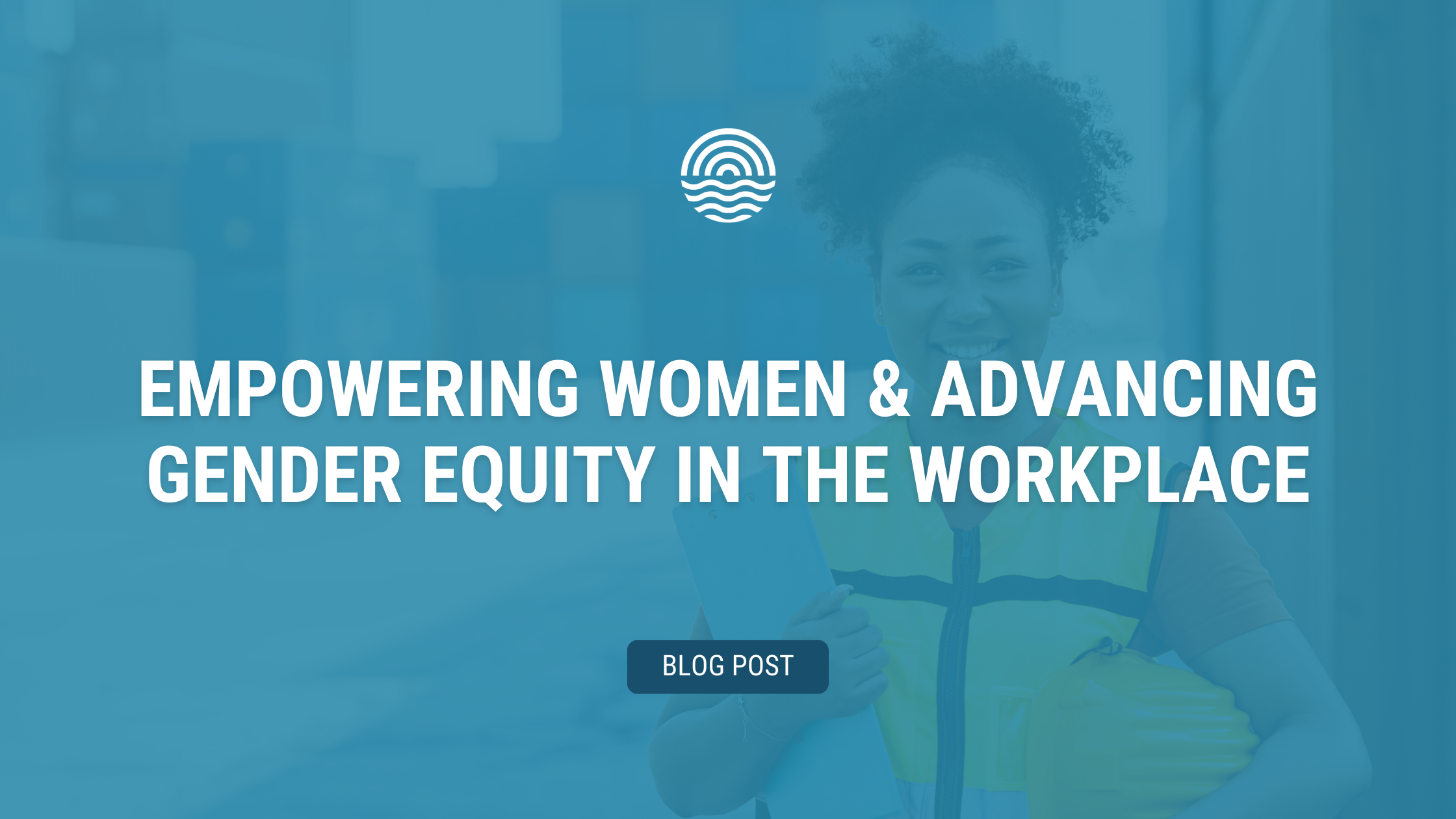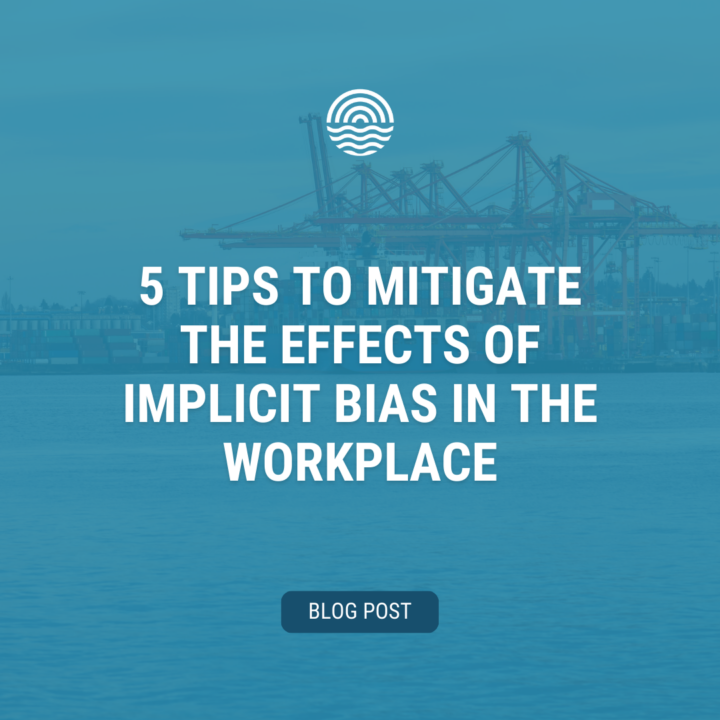
BLOG POST
Empowering Women & Advancing Gender Equity in the Workplace
As we celebrate the achievements and resilience of women this International Women’s Day, we wanted to take the opportunity to recognize that building gender equity in the workplace is a continuous journey, and we still have a long way to go.
Employers play a pivotal role in driving change, with a responsibility to empower women in the workplace and create environments that foster inclusivity and equal opportunities for everyone.
In this blog post, we’ll share 6 ways you can reinforce your commitment as an employer to the advancement of gender equity in the workplace. But first we’ll address what you may be wondering:
What is gender equity? (And isn’t gender equality the same thing?!)
It’s important to note that gender equality and gender equity are two different terms, and we are intentionally using “gender equity” in this case.
Understanding the differences between them is crucial for addressing various aspects of gender-related challenges.
1. Gender Equality
- Definition: Gender equality refers to the equal rights, opportunities, and treatment of individuals regardless of their gender.
- Focus: The emphasis is on ensuring that both men and women have the same rights and opportunities in all areas of life, including education, employment, healthcare, and participation in social and political activities.
- Goal: The ultimate goal of gender equality is to eliminate discrimination based on gender and to create a society where individuals, regardless of their gender, have the same chances of success and fulfillment.
2. Gender Equity
- Definition: Gender equity involves fairness and impartiality in the distribution of resources, opportunities, and responsibilities between men and women according to their needs.
- Focus: Gender equity acknowledges that men and women may have different needs and that treating everyone the same may not result in fairness. It aims to address historical and social disadvantages that women may have faced and ensures that both genders have what they need to succeed.
- Goal: The goal of gender equity is to provide everyone with a fair opportunity to succeed, taking into account the unique challenges and barriers faced by different genders.
In summary, while gender equality focuses on treating men and women equally and eliminating discrimination, gender equity recognizes that historical and societal factors may have led to unequal starting points. Gender equity aims to correct these imbalances by providing fair opportunities and resources to address the unique needs and challenges faced by individuals of different genders. Both concepts are essential for creating a just and inclusive workplace (and society), where everyone has the chance to reach their full potential.
5 Ways to Advance Your Progress Towards Gender Equity in the Workplace
As employers, our commitment to gender equity is a continuous journey of action and intentional initiatives.
Here are 5 ways that employers can reinforce their commitment to fostering an inclusive and equal workplace for women:
1. Equal Opportunities
Employers should be dedicated to providing equal opportunities for career growth, mentorship, and leadership roles to all employees, irrespective of gender.
Implementing standardized performance criteria and conducting bias training serve as potential tactics. Additionally, establishing clear pathways for advancement and implementing formal mentorship programs can further aid in breaking down related barriers. Taking action to ensure equal opportunities helps provide all employees with an equal chance to succeed within your organization.
2. Inclusive Policies
Craft workplace policies with inclusivity at the forefront and regularly assess existing workplace policies to ensure they promote gender equity.
Consider incorporating specific policies to address potential biases or barriers that may disproportionately affect women. This might include offering parental leave policies that promote equal caregiving responsibilities.
3. Pay Transparency
While pay transparency is a legal requirement for many employers (especially here in BC, with BC’s Pay Transparency Act), it’s a practice that all employers should consider, regardless of whether they have legal obligations. Promoting pay transparency is essential to identify and address any existing gender pay gaps.
Regularly conduct pay equity audits to identify and rectify any gender-based pay gaps. Ensure transparency in pay structures and practices, promoting equal compensation for equivalent roles. By fostering openness around compensation, employers ensure that all employees are fairly rewarded for their skills and contributions.
4. Training and Development
The commitment to advancing gender equity and empowering women should extend to their professional growth and excellence.
Consider implementing training programs tailored to nurture the skills and potential of your female-identifying workforce. Mentorship, skill-building workshops, and leadership development initiatives pave the way for women to excel in their careers.
In fact, in recognizing the historical gender disparity in the waterfront industry, one of our member organizations, GCT, created a women’s leadership group aimed at building a supportive ecosystem. By fostering mentorship and allyship, they aim to empower and elevate women in roles traditionally held by men. (Read more here!)
5. Flexible Work Options
Providing flexible work options is a pivotal strategy in advancing gender equity within the workplace.
While both men and women may face caregiving responsibilities and strive to achieve work-life balance, women often encounter additional societal expectations and pressures related to caregiving roles. By offering flexibility in work arrangements, employers create an environment that supports individuals in managing their professional responsibilities alongside personal commitments. This not only fosters a more inclusive and supportive environment but also contributes to breaking down traditional gender norms.
Flexible work options create a level playing field for everyone. Flexible work allows people to thrive in their careers while maintaining a harmonious integration of their personal lives. Embracing flexibility is a tangible commitment to gender equity. It promotes equal opportunities and a more balanced and equitable work culture for everyone.
When in doubt, listen to your team.
Employers should actively seek feedback and engage in open conversations to better understand the needs and aspirations of their team members, especially women and non-binary folks. By listening and learning, employers ensure that policies and initiatives are responsive to the evolving needs of their workforce, fostering an environment where everyone’s voice is valued.
Beyond listening, it’s crucial to act upon the insights gained. Implement concrete measures that address the unique challenges faced by women and non-binary individuals in the workplace. Regularly assess the effectiveness of these actions through surveys and performance metrics.
By translating insights into tangible initiatives, you can demonstrate your commitment to creating an environment where everyone’s voice is not only heard but actively contributes to positive change.
Questions about promoting gender equity in your workplace? Not sure where to start?


